Topics
Category
Era
Karst Topography in Fillmore County
Southeast Minnesota boasts a unique geological landscape of rolling hills, fertile fields, dramatic bluffs, and freshwater streams. Beneath its lush surface is a hidden world of underground caves and rivers created after thousands of years of rain and snow seeped through fractured bedrock, slowly softening and dissolving sedimentary rock.
Between 14,000 and 12,000 years ago, the last glacier moved across most of the upper Midwest. It buried much of the area under deposits of silt, clay, gravel, and rocks known as “drift.” Because the distinctive bluffs and narrow valleys of Southeast Minnesota, Northeast Iowa, Southwest Wisconsin, and Northwest Illinois stopped the glacier’s advancement, these areas are known collectively as the Driftless Area. The unique terrain of the Driftless Area, created by dissolving sedimentary rock, is known as karst topography.
Karst is formed by a chemical reaction between water and carbon dioxide in the soil and atmosphere. It makes the water slightly acidic, which causes soluble rock to gradually dissolve. Soluble rock includes limestone, one of the most common types of bedrock in Fillmore County.
Limestone was formed from an accumulation of mud, sand, and the remains of animals that made a prehistoric sea in the area their home during the Paleozoic era. This shallow sea came and went over thousands of years, depositing layers of mud, sand and fossils. As these deposits slowly broke down in Fillmore County, they left behind bluffs, narrow river valleys, and, most notably, sinkholes and caves.
Fillmore County is home to more than 10,000 sinkholes. They were formed when soluble rock beneath the surface soil collapsed following centuries of exposure to rain, snow, and seasonal freezing and thawing. Most Fillmore County fields have outcrops of trees where only green leaves and branches can be seen. Tree branches jut upwards from these sinkholes; trunks and roots are hidden from view. Sinkholes can measure anywhere from a few feet to a hundred feet in depth, and occasionally become entrances to the underground caves that pepper Southeast Minnesota.
Because so many visitors to Harmony ask about those unusual tree clusters, the Harmony Area Historical Society (HAHS) purchased a sinkhole on the northwest side of town along the Harmony-Preston Bike Trail. They created the Karst Exhibit at the Harmony Visitor Center and the Karst Interpretive Site along the trail to explain how sinkholes are created, as well the area’s geology. The Minnesota Department of Natural Resources now manages the Karst Interpretive Site.
Visitors to Fillmore County can experience the unique karst geology of the Driftless Area up close by visiting two caves within a few miles of each other. Public tours are offered to see Niagara Cave near Harmony and Mystery Cave near Preston. Both caves were formed nearly 400,000 years ago and provide excellent examples of intricate underground passageways carved by underground water flow.
Bibliography
Bertalan, Dan, and Rob Nelson. “Mysteries of the Driftless–‒The Documentary.” YouTube. Posted by Untamed Science, September 17, 2013.
https://www.youtube.com/watch?v=xn_DOPumFkU
“Finding Minnesota: The Cave That Pigs Discovered.” WCCO TV, July 6, 2014.
http://minnesota.cbslocal.com/2014/07/06/finding-minnesota-the-cave-that-pigs-discovered/
Karst Interpretive Site. Harmony Area Historical Society.
https://www.exploreharmony.com/harmony-area-historical-society/karst-interpretive-site/
Haynes, Cyd. “3 ½ Hours to Natural Wonder.” Maple Grove magazine, July 2014.
http://maplegrovemag.com/3%C2%BD-hours-natural-wonder
Karst topography exhibit. Harmony Visitor Center (Harmony, Minnesota), May 2018.
“Niagara Cave Celebrates 80 Years.” KTTC, June 11, 1014.
Weiss, John. “Niagara Cave Celebrates 90 Years, With Lantern Light.” Rochester Post-Bulletin, June 7, 2014.
http://www.postbulletin.com/news/local/niagara-cave-celebrates-years-with-lantern-light/article_fb193f37-706c-57a9-99a0-0d857e2ea4c1.html
Related Images
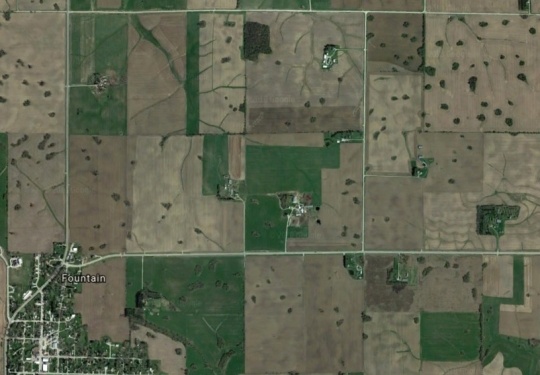
Aerial view of sinkholes in Fillmore County
Public domain
Holding Location
Articles
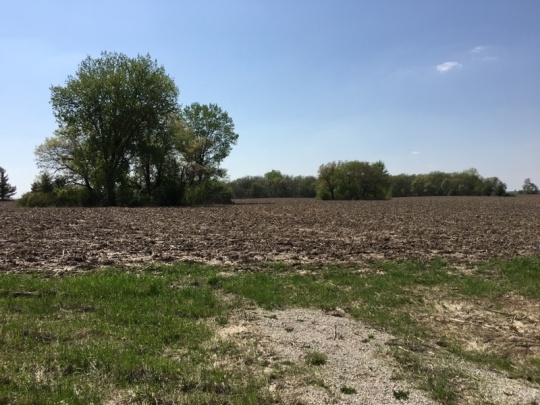
Karst sinkholes
All rights reserved
Holding Location
Articles
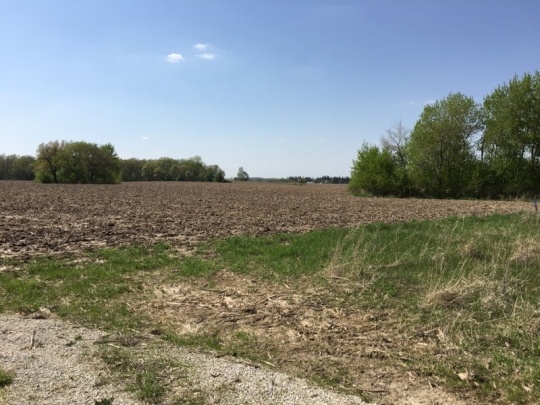
Karst sinkholes
Holding Location
Articles
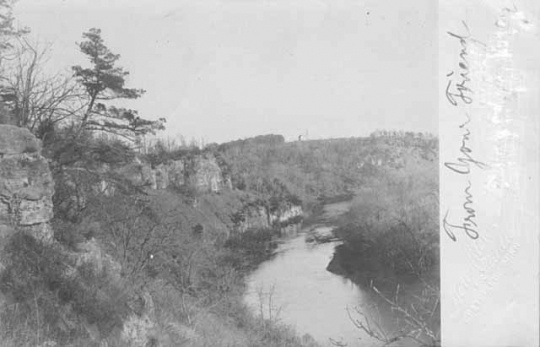
Lynch Creek
Public domain
Holding Location
Articles
More Information
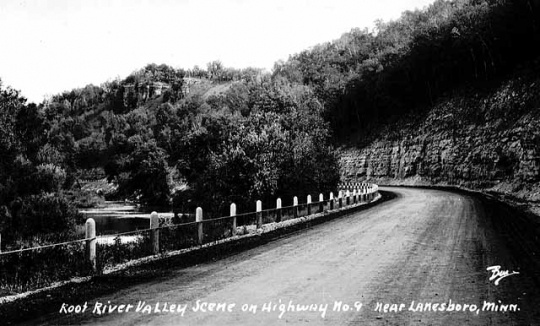
Root River Valley
Public domain
Holding Location
Articles
More Information
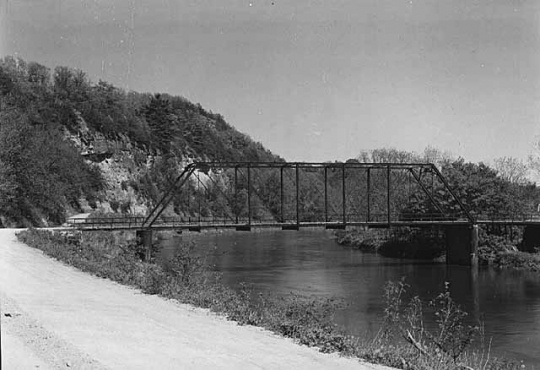
Root River
Holding Location
Articles
More Information
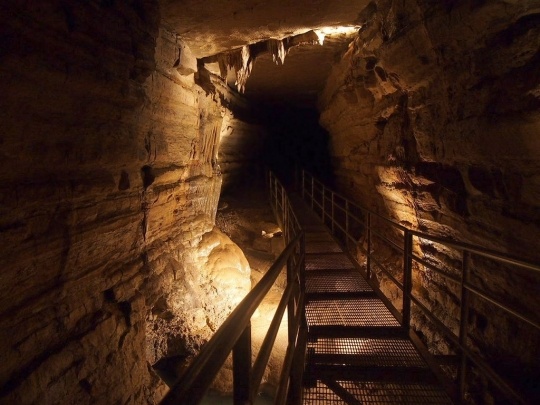
Mystery Cave
Holding Location
Articles
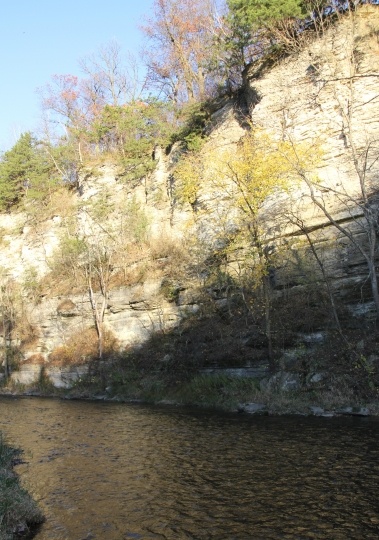
Limestone bluff along the north branch of the Root River
Holding Location
Articles
More Information
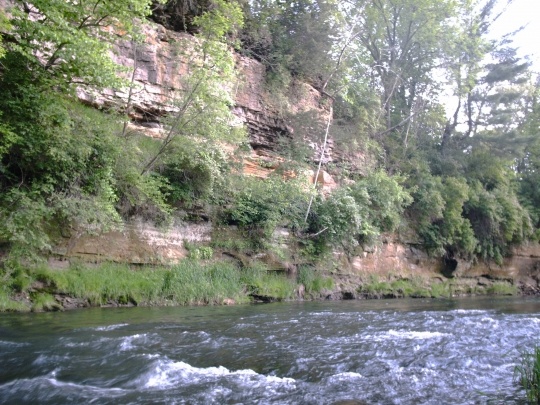
Root River limestone bluff, Preston, Minnesota
Holding Location
Articles
More Information
Related Articles
Turning Point
The last glacier moves across the upper Midwest between 14,000 and 12,000 years ago, but does not cover Southeast Minnesota, Southwest Wisconsin, Northeast Iowa and Norwest Illinois, collectively known as the Driftless Area, due to the region’s karst topography.
Chronology
470,000,000 BCE
400,000 BCE
14,000 - 12,000 BCE
1924
1934
1937
1947
1989
Bibliography
Bertalan, Dan, and Rob Nelson. “Mysteries of the Driftless–‒The Documentary.” YouTube. Posted by Untamed Science, September 17, 2013.
https://www.youtube.com/watch?v=xn_DOPumFkU
“Finding Minnesota: The Cave That Pigs Discovered.” WCCO TV, July 6, 2014.
http://minnesota.cbslocal.com/2014/07/06/finding-minnesota-the-cave-that-pigs-discovered/
Karst Interpretive Site. Harmony Area Historical Society.
https://www.exploreharmony.com/harmony-area-historical-society/karst-interpretive-site/
Haynes, Cyd. “3 ½ Hours to Natural Wonder.” Maple Grove magazine, July 2014.
http://maplegrovemag.com/3%C2%BD-hours-natural-wonder
Karst topography exhibit. Harmony Visitor Center (Harmony, Minnesota), May 2018.
“Niagara Cave Celebrates 80 Years.” KTTC, June 11, 1014.
Weiss, John. “Niagara Cave Celebrates 90 Years, With Lantern Light.” Rochester Post-Bulletin, June 7, 2014.
http://www.postbulletin.com/news/local/niagara-cave-celebrates-years-with-lantern-light/article_fb193f37-706c-57a9-99a0-0d857e2ea4c1.html










